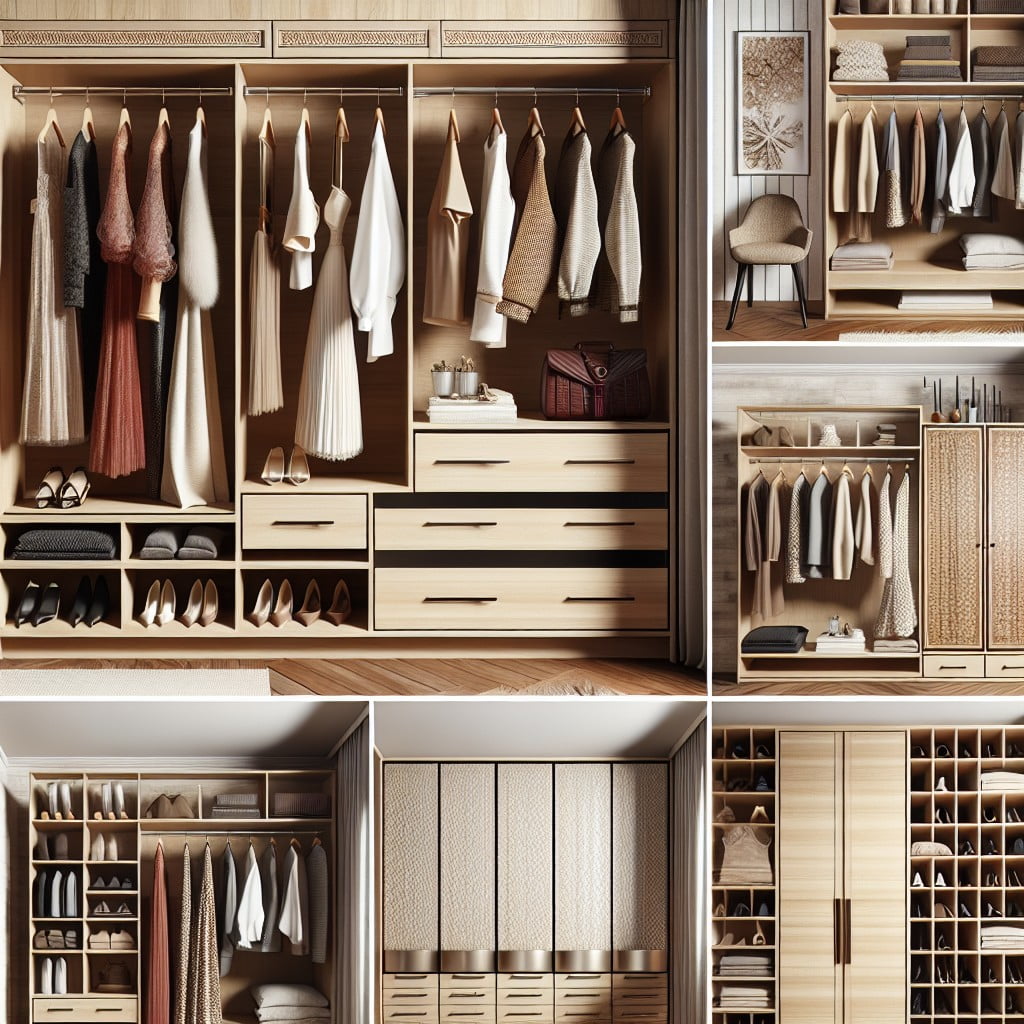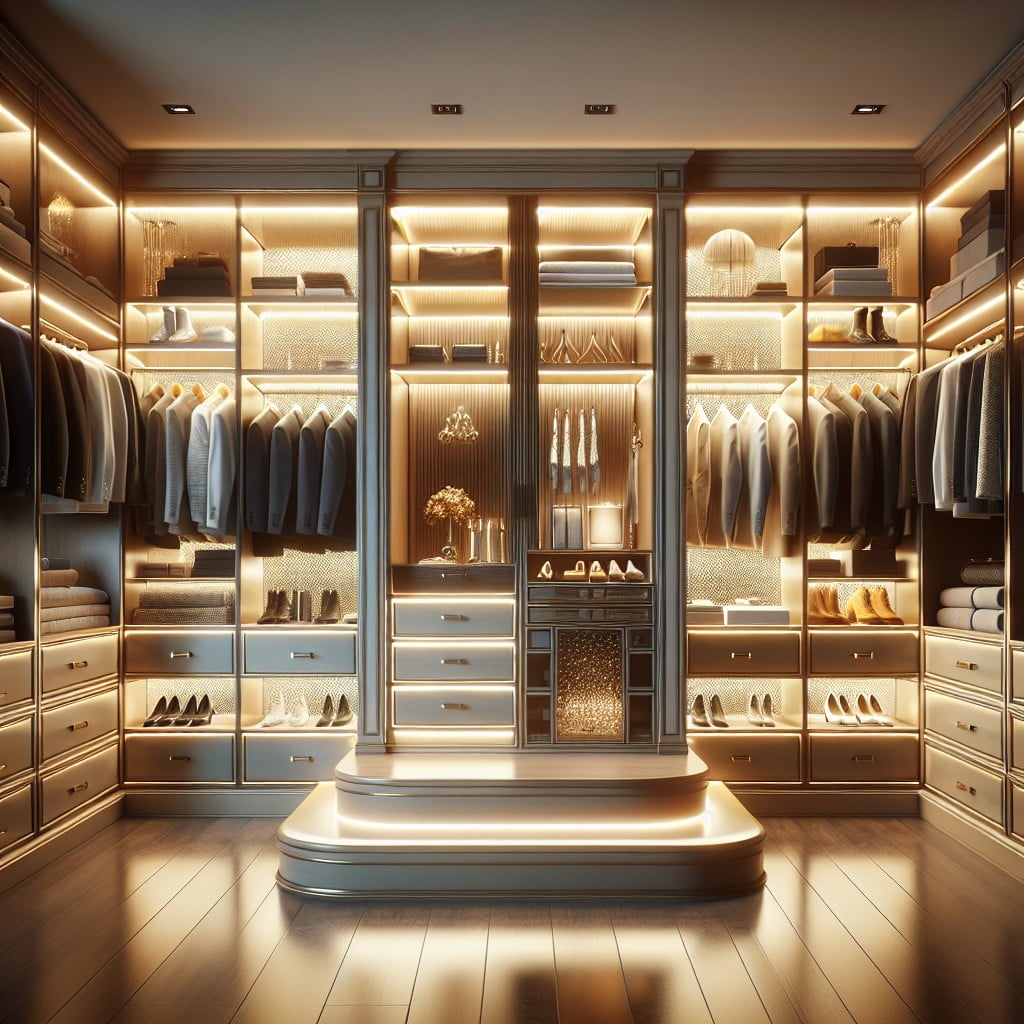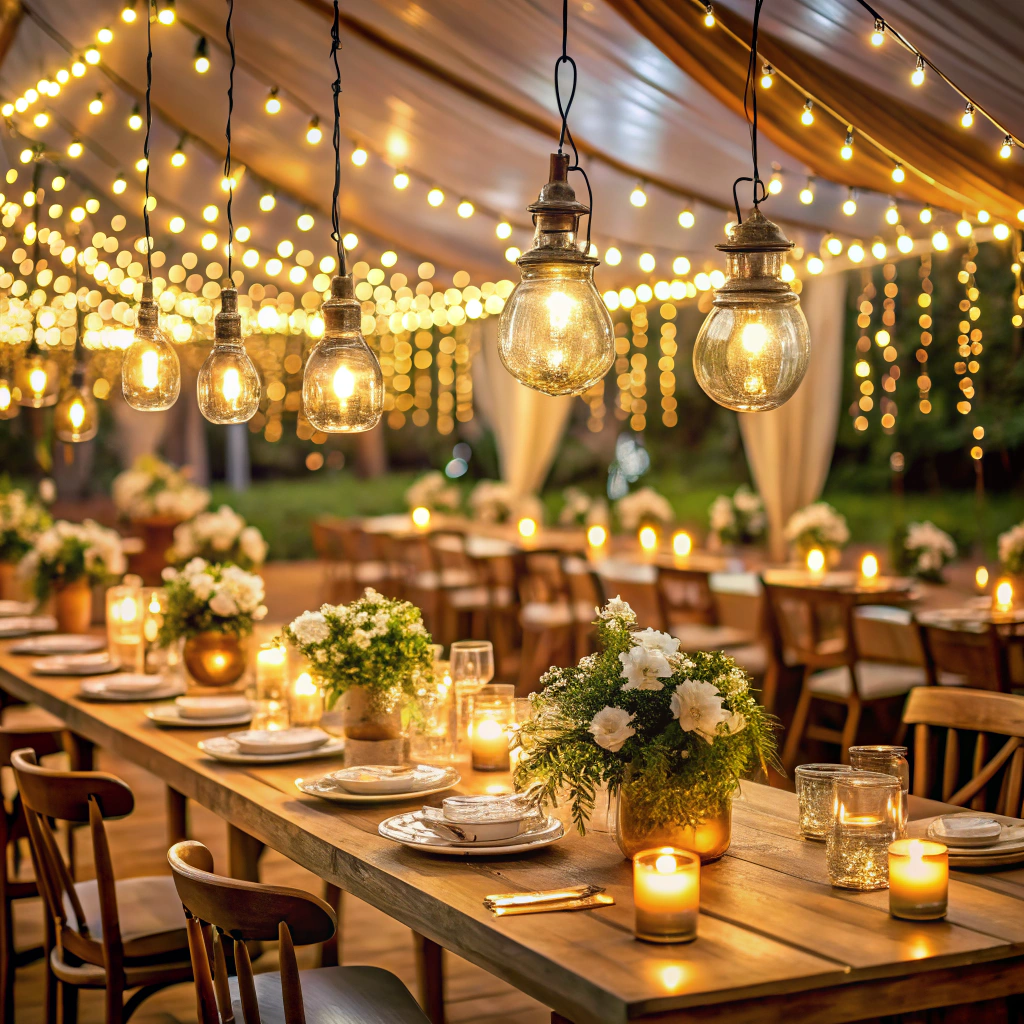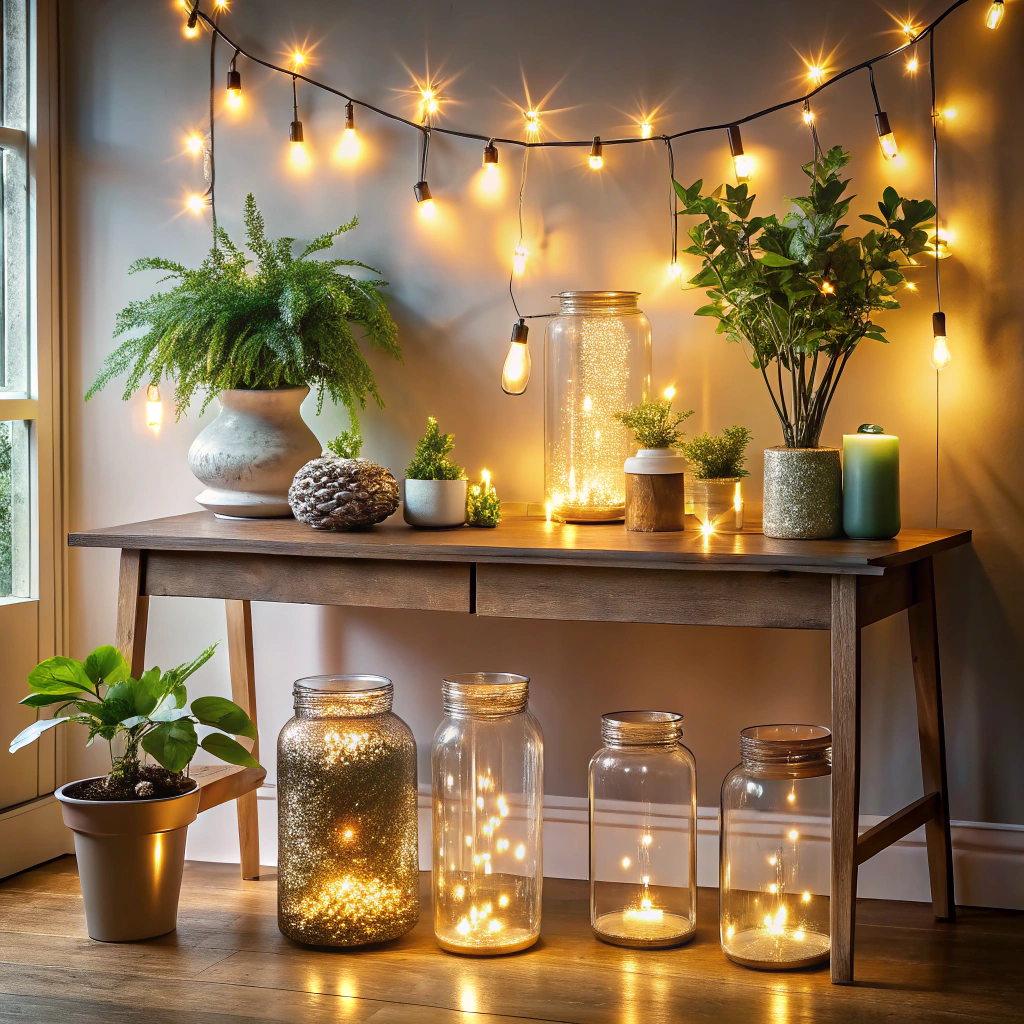Last updated on
Choosing the right closet contractor has never been more critical because incorrect or ill-suited solutions can lead to wasted space, time, and funds—this article will help you make an informed choice by comparing and reviewing top closet contractors.
Key takeaways:
- Specialized closet contractors design and install personalized storage solutions.
- Assess your inventory, space, functionality, future needs, and budget before consulting a contractor.
- Collaboration between builders and closet contractors ensures seamless integration.
- Custom designed closets offer optimized space, personalization, and added home value.
- Consider material options, accessories, lighting, and organizational features for your closet.
Understanding the Role of Closet Contractors

Closet contractors specialize in designing, constructing, and installing personalized storage solutions for residential homes. These experts help homeowners optimize their space with custom solutions that are both functional and aesthetically pleasing.
They work closely with clients to determine the best use of space, select materials, and incorporate specific storage needs such as shoe shelves, hanging rods, or built-in drawers.
Once the design is finalized, closet contractors ensure efficient installation, adhering to precise measurements and quality craftsmanship. Their role extends beyond mere installation; they provide valuable insights on maintaining and organizing newly installed closet systems to ensure durability and lasting satisfaction.
Identifying Your Closet Needs

Before reaching out to a closet contractor, it’s essential to determine your storage requirements and aesthetic preferences. Consider the following:
1. Inventory Assessment: Take stock of your belongings to understand the amount and type of storage you need. Differentiate between hanging space, drawers, or shelving requirements based on items you own.
2. Space Evaluation: Measure your available space to have a clear idea of what can be accommodated. Remember to consider not just width and depth, but also vertical space.
3. Functionality vs. Style: Decide what matters more — a highly functional closet that maximizes every inch or a luxurious one that’s as much about appearance as use.
4. Future-proofing: Think ahead. Will your storage needs change? The inclusion of adjustable components can cater to evolving requirements.
5. Budget: Establish a realistic budget for the project. This will help the contractor recommend materials and designs that align with your financial considerations.
By having a clear understanding of these elements, you’ll be better equipped to communicate your needs to a closet contractor, ensuring a result that is both practical and pleasing to the eye.
Collaboration Between Builders and Closet Contractors

When constructing a new home or undertaking a major renovation, builders often team up with specialized closet contractors to ensure that storage spaces are both functional and aesthetically pleasing. This collaboration is crucial as it allows for the integration of closet designs into the broader architectural plan. Builders bring to the table their expertise in structural integrity and building codes, while closet contractors offer insight into space optimization and personalized storage solutions.
Working together, they can address potential challenges early in the design phase, such as incorporating electrical wiring for built-in lighting or planning the layout to accommodate HVAC systems. This synergy also ensures that closet spaces are not an afterthought but rather a seamlessly incorporated feature of the home’s overall design. Closet contractors can provide 3D models and prototypes, which allows builders to visualize the end result and make necessary adjustments before construction begins.
Ultimately, this collaboration leads to the creation of closets that are not only beautiful and tailored to the homeowners’ lifestyle but also built to last, reflecting the attention to detail and quality craftsmanship of both the builder and the closet contractor.
The Benefits of Custom Designed Closets

Custom designed closets transform cluttered storage areas into efficient, organized spaces tailored to your lifestyle and preferences. Opting for a tailored solution allows for optimal use of available space with creative configurations that standard closets can’t match.
These personalized systems can integrate specialized racks, shelves, and drawers suited to your unique wardrobe and accessory collection, streamlining your daily routine.
By choosing a custom design, you also have the freedom to select materials and finishes that complement your home’s decor. Whether you favor a minimalistic look with clean lines or a more traditional aesthetic with ornate detailing, a custom closet can be crafted to reflect your style.
Additionally, custom closets can add substantial value to your home. They are an attractive feature for potential buyers, who appreciate the convenience and luxury of well-organized closet spaces. A well-designed closet is not only a practical investment but one that can pay dividends in terms of home valuation.
Furthermore, the personalization of a custom closet extends to lighting and accessories, allowing for a truly bespoke experience. From soft, ambient lighting to showcase your clothing to built-in laundry hampers and ironing boards, a custom closet can be your personal dressing haven that perfectly meets your needs.
Exploring Closet Product Options
Diving into the myriad of available closet products can significantly impact functionality and aesthetics. Shelving units come in diverse materials, such as wire, wood, or melamine, each offering unique strengths in terms of durability and style.
Hanging rods are equally varied, from adjustable chrome options to stationary wooden ones, catering to different garment storage needs.
Drawer systems also offer customization, with options for built-in dividers or soft-close features, making organization and access to items a breeze.
Accessories, like tie racks, shoe organizers, and belt loops, serve as the perfect addition for those looking to streamline their wardrobe arrangement.
Lighting cannot be overlooked, as it enhances visibility and adds an element of elegance. LED strips or puck lights can be strategically placed to illuminate every section of your closet.
For those with specific requirements, specialized racks for particular items, such as pants organizers or pull-down rods, can accommodate different lifestyles and clothing preferences.
The aim is to blend practicality with personal taste, ensuring your closet serves you effectively in the day-to-day.
Installation Services By ClosetMaid Dealers
ClosetMaid dealers offer professional installation services to ensure that your custom closet systems are not only designed to your specifications but also properly set up for maximum durability and functionality. Here are key points to consider:
1. Expertise: Trained technicians have the know-how to handle various installation challenges, from complex designs to unique space constraints.
2. Tools and Equipment: ClosetMaid installers arrive equipped with the right tools, ensuring a precise and clean installation.
3. Time Efficiency: Choosing professional installation means your closet will be ready to use sooner, with minimal disruption to your routine.
4. Warranty Protection: Installations done by authorized dealers often come with service guarantees, protecting your investment.
5. Peace of Mind: By relying on experts, you reduce the risk of installation errors that can arise from DIY attempts, such as misalignment or improper anchoring.
Maximizing Space With the Right Closet Design
Effective closet design transforms cluttered rooms into organized sanctuaries, which means every item has a designated spot, and you can easily find what you’re looking for. To achieve this, consider the following points:
- Utilize vertical space by installing floor-to-ceiling shelves which can house out-of-season clothing or less frequently used items in higher, less accessible shelves.
- Incorporate a variety of storage options such as drawers for intimates, shelves for folded items, and multiple hanging areas for different lengths of clothing to ensure a place for everything.
- Integrate built-in accessories such as tie racks, shoe organizers, and pull-out hampers to streamline your storage and make effective use of each square inch.
- Adjustable shelving and rods cater to evolving wardrobe needs, allowing you to reconfigure the space as necessary without a complete remodel.
- For small closets, use mirrored doors or light colors to visually expand the space and increase lighting to make the interior more inviting and easier to navigate.
By thoughtfully combining these strategies, you can maximize your storage capacity and bring harmony to your closet space.
Closet Contractor Credentials and Experience
Hiring a professional with the right credentials ensures that your closet project meets industry standards and is completed efficiently. Look for contractors who possess a combination of formal training in carpentry or interior design and hands-on experience in closet system design and installation. Certifications from recognized institutions, such as the National Association of Home Builders (NAHB) or the Association of Closet and Storage Professionals (ACSP), can be a testament to a contractor’s expertise.
In addition to formal qualifications, the contractor’s portfolio is valuable; it reflects their skill level and the variety of projects they’ve handled. Seasoned contractors should be willing to provide references or examples of previous work. This not only demonstrates their experience but also helps you gauge whether their style aligns with your vision.
Lastly, check for a valid business license and insurance, which protects you against potential property damage or job-related injuries. A reputable contractor will be transparent about these documents and provide copies upon request. Remember, the right blend of experience, credentials, and professionalism is key to ensuring the success of your closet renovation project.
Cost Comparison for Closet Construction Services
Determining the financial investment for a closet construction project hinges on several factors. Firstly, custom designs typically have a higher price tag than off-the-shelf systems due to the personalization and craftsmanship involved.
Secondly, material selection influences costs, with options ranging from economical wire systems to luxurious hardwood builds.
Thirdly, the size and complexity of the design can also affect pricing; more intricate layouts with additional features such as built-in seating or automation will increase the overall cost.
Additionally, professional installation services are usually calculated separately and can be impacted by the project’s scope and any structural modifications required.
To ensure cost-effective solutions without compromising on quality, it is advisable to obtain multiple quotes from reputable contractors, thoroughly review included services, and inquire about potential discounts or promotions.
It’s important to consider the long-term value, as a well-constructed closet can enhance home organization and increase property value.
Preparing for Your Closet Renovation Project
Before diving into a closet renovation, take these practical steps to ensure a smooth process:
1. Measure: Accurately measure your space or have a professional do it to avoid any design mishaps.
2. Clear Out: Remove all items from your closet. This will give you a better idea of the volume of belongings you need to accommodate and may inspire purging items you no longer use.
3. Inventory: Make a list of what you’ll store in the new closet. This helps prioritize features like hanging space, drawers, and shelves.
4. Budget: Set a realistic budget for your project, considering both materials and labor.
5. Research: Look into current trends and organizational systems that might enhance your space.
6. Temporary Solutions: Set up a temporary area for your clothes and belongings during the renovation.
7. Professional Consult: Schedule a consultation with a closet contractor to discuss your vision and requirements.
8. Time Frame: Discuss timelines with your contractor to understand how long the project will take.
9. Permit: If required, ensure that you or your contractor secures the necessary building permits to avoid legal issues.
10. Expectations: Prepare for noise and disruption. Renovations can be messy and loud but knowing what to expect can make the experience less stressful.
Customer Testimonials and Ratings
When assessing potential closet contractors, customer testimonials and ratings are invaluable. These firsthand accounts provide insight into the quality of workmanship, professional conduct, and customer service a contractor offers.
Key points to consider:
- Authenticity: Look for genuine feedback on platforms like Google Reviews or on the contractor’s website. Authentic reviews often contain specific details about the client’s experience.
- Consistency of Positive Feedback: A pattern of satisfied clients can often predict the outcome of your project.
- Issue Resolution: Pay attention to how contractors have addressed any negative comments. Effective and courteous resolution of issues is a strong indicator of a contractor’s dedication to customer satisfaction.
- Recent Reviews: Prioritize recent testimonials to ensure the contractor’s current work quality and service standards are up to par.
- Star Ratings: Platforms with a star rating system offer a quick gauge of overall satisfaction. However, read beyond the stars for context on the ratings provided.
These indicators can greatly assist in forming a well-rounded impression of a contractor, ensuring you make an informed choice for your closet renovation needs.
Quality Assurance and Warranty Information
Quality assurance and warranty coverage are pivotal to safeguarding your investment in a customized closet system. Reputable closet contractors typically provide a guarantee of their workmanship, offering peace of mind and recourse should any issues arise post-installation.
Here are key points to consider regarding quality assurance and warranties:
- DURATION: Warranties often vary in length; ensure you’re clear on how long your closet is covered and what specific elements the warranty includes.
- SCOPE: Understand whether the warranty covers labor, parts, or both. It should clearly outline any exclusions or limitations.
- TRANSFERABILITY: If you plan to sell your home, check if the warranty is transferable to the new owners, which can be an added selling point.
- CLAIM PROCESS: Familiarize yourself with the procedure for filing a claim, including any necessary documentation and time frames for reporting issues.
- QUALITY STANDARDS: Ensure that the contractor adheres to industry standards and uses high-quality materials that are likely to last and perform as expected.
- CERTIFICATIONS: Contractors with certifications from recognized industry organizations often observe stringent quality protocols.
Remember, a solid warranty reflects a contractor’s confidence in their work and contributes significantly to the overall value of your closet installation.
Choosing the Right Material for Your Closet
Selecting the appropriate material for your closet is crucial as it impacts both the aesthetic and longevity of the construction. Here are key considerations:
1. Durability – Hardwoods like maple or oak resist wear and tear well, making them ideal for high-use closets.
2. Cost – Engineered wood or laminate options offer a balance between durability and affordability for those on a budget.
3. Aesthetic Appeal – The material should complement your room’s style. Woods can be stained or painted to match decor, while laminates are available in various patterns and colors.
4. Environmental Concerns – For those eco-conscious, bamboo and cedar are sustainable choices, also providing a natural moth repellent in the case of cedar.
5. Maintenance Requirements – Consider the level of upkeep; solid woods may require more attention compared to laminates which often just need a simple wipe down.
6. Weight Capacity – Ensure the material chosen can handle the weight of the items stored. Particleboard may suffice for lighter items, but thicker ply or solid wood might be needed for heavier loads.
Explore these materials critically and remember, they will define the look, feel, and functionality of your closet space for years to come.
Customizing Closet Doors and Room Dividers
Custom closet doors and room dividers add both function and aesthetic appeal to your space. Bypass doors slide past each other and are ideal for tighter spaces, whereas bi-fold doors fold outward, offering full access to the closet interior. For a sleek, contemporary look, consider sliding barn doors that also save space and add a decorative touch.
Room dividers, on the other hand, offer a versatile solution to separate areas within a room without building permanent walls. They can be designed to match the overall decor, with choices ranging from simple shoji screens to elaborate custom panels that complement your closet doors.
When selecting materials and styles, consider the room’s color scheme and lighting. For instance, mirrored doors can make a room appear larger and brighter, while solid wood adds a touch of warmth and privacy. Incorporating glass or frosted elements can simultaneously provide openness and seclusion. Remember, hardware choices can also significantly impact the look and feel of your doors and dividers. Opt for finishes that tie in with the room’s fixtures for a cohesive design.
Understanding the Closet Construction Process
Navigating the closet construction process is crucial for a seamless transition from design to installation. Initially, the contractor evaluates the available space and discusses your storage requirements, determining the optimal layout and functionality. Once a design is approved, the contractor measures the area precisely to ensure a perfect fit.
The next phase is the selection of materials, which varies from wire systems to wood finishes, each offering different aesthetics and durability. Contractors may also suggest accessories such as shoe racks, drawers, or tie holders to enhance organization.
After materials and accessories are chosen, the contractor drafts a detailed project timeline, outlining each step to manage expectations. The actual construction begins with preparing the space, which might include removing existing structures or ensuring walls are ready to support new installations.
In the final installation stage, each component is carefully assembled, from mounting tracks and shelves to adding the finishing touches like handles or lighting. Contractors ensure that the closet system is secure and functional, with all moving parts operating smoothly.
Throughout the process, communication is key to a satisfactory outcome. An experienced contractor will keep the lines open, providing updates and addressing any concerns promptly.
FAQ
How much does it cost to build a built-in closet?
The cost to construct a built-in closet typically ranges from $2,500 to $10,000, with most customers spending between $3,500 to $5,000 depending on the size of the closet and the customizations required.
How much should your closet cost?
The average cost to build a custom closet typically ranges between $1,061 and $3,204.
What is the price to install a closet?
The cost to install a bedroom closet typically ranges from $20 to $100 per square foot, with total project costs varying significantly based on the size of the closet.
Why are custom closets so expensive?
Custom closets demand a higher price due to their larger size requiring more materials and labor and the impact on cost of specific materials used, including wood, laminate, or metal.
What factors influence the pricing of a custom-built closet?
The pricing of a custom-built closet is influenced by factors such as materials used, size and complexity of design, labor costs, additional features like lighting or specialty hardware, and the reputation or location of the builder.
Are there budget-friendly alternatives for having a custom closet?
Yes, budget-friendly alternatives for custom closets include DIY closet systems, ready-to-assemble modular storage units, and optimizing existing closet space with storage bins and organizers.
How does the size of the closet affect the overall cost of construction?
The size of the closet significantly impacts the overall cost of construction, as larger closets require more materials and labor, thereby increasing the total expenses.
Recap:




